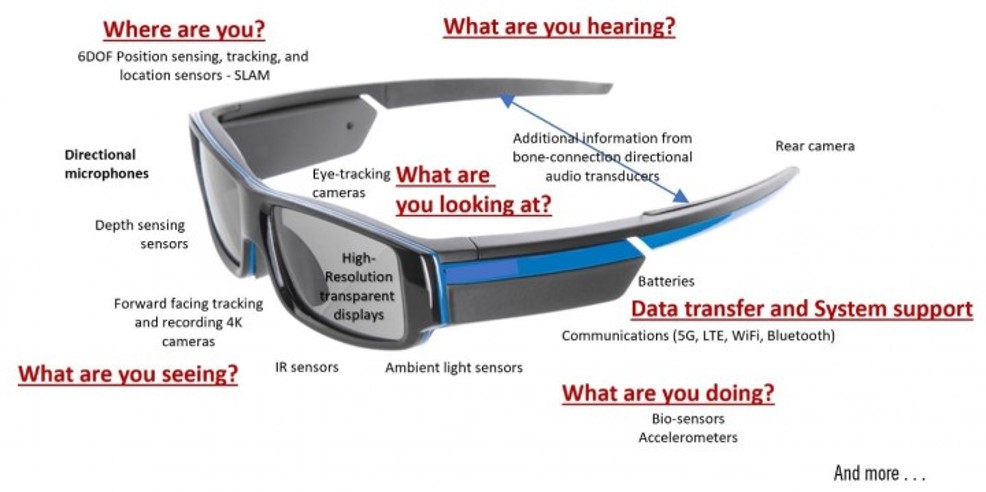AREA Safety Infographic
 Engaging in immersive experiences can offer a wide array of benefits, catering to different aspects of personal growth, entertainment, education, and even therapeutic purposes. Some of the key advantages of participating in immersive experiences include:
Engaging in immersive experiences can offer a wide array of benefits, catering to different aspects of personal growth, entertainment, education, and even therapeutic purposes. Some of the key advantages of participating in immersive experiences include:
Enhanced Learning: Immersive experiences can facilitate more effective learning by providing hands-on and interactive environments, allowing participants to grasp complex concepts and skills more easily.
Increased Engagement: Immersive experiences captivate the attention of participants, fostering a deeper level of engagement that can lead to better retention of information and a more profound emotional connection to the content.
Skill Development: Certain immersive experiences, such as simulations or virtual training programs, can help individuals acquire practical skills and competencies in a controlled and risk-free environment.
Therapeutic Benefits: Virtual reality has shown promise in various therapeutic applications, such as exposure therapy for phobias and post-traumatic stress disorder (PTSD), pain management, and relaxation techniques.
Entertainment and Escapism: Immersive experiences in entertainment, such as virtual reality gaming, theme park attractions, and interactive theatre, offer a form of escapism and entertainment that can provide relaxation and enjoyment.
Increased Empathy and Understanding: Immersive experiences can foster empathy by allowing participants to see the world from different perspectives, promoting a deeper understanding of diverse cultures, experiences, and challenges.
Innovation and Creativity: Immersive experiences can inspire innovation and creativity by providing a platform for experimentation and exploration, encouraging participants to think outside the box and come up with novel solutions to problems.
Social Interaction: Certain immersive experiences, particularly those involving multiplayer virtual environments or interactive installations, can encourage social interaction and collaboration, facilitating teamwork and communication skills.
Memorable Experiences: Immersive experiences often create lasting memories due to their engaging and novel nature, leaving a lasting impact on participants and encouraging them to reflect on their experiences long after they have ended.
All Mixed Reality systems are limited in their capability of accurately displaying and controlled all relevant depth cues, and as a result, perceptual biases can interfere with task performance. In this paper we identify and discuss eighteen issues that pertain to Mixed Reality in general, and Augmented Reality in particular. Risks – Virtual and augmented reality are increasingly used in a wide variety of fields including healthcare, training, real estate, safety and leisure. While immersive experiences can offer numerous benefits, there are also potential dangers associated with prolonged or unchecked engagement. Some of these risks include:
Physical Health Risks: Extended exposure to virtual reality environments can lead to issues such as eye strain, dizziness, headaches, and motion sickness, especially in individuals who are prone to motion-related discomfort.
Psychological Impact: Intense or disturbing immersive experiences, particularly those involving violent or traumatic content, can potentially trigger psychological distress, including anxiety, post-traumatic stress, or desensitization to real-world violence.
Social Isolation: Excessive reliance on immersive experiences may lead to social isolation as individuals prefer virtual interactions over face-to-face communication, which can have adverse effects on mental health and well-being.
Addiction: Immersive experiences, particularly in the form of addictive gaming or virtual reality simulations, can lead to behavioural addiction, where individuals may prioritize the virtual world over real-life responsibilities, leading to a decline in overall functioning and well-being.
Physical Hazards: Engaging in immersive experiences, especially in virtual reality environments, can potentially increase the risk of accidents and injuries if participants are not fully aware of their physical surroundings.
Privacy and Security Concerns: Immersive experiences often require the collection of personal data, leading to potential privacy breaches and security vulnerabilities, especially if the data is mishandled or falls into the wrong hands.
Escapism and Avoidance: While immersive experiences can provide a temporary escape from reality, excessive reliance on them as a coping mechanism can lead to avoidance of real-life challenges, hindering personal growth and problem-solving skills.
To mitigate these risks, it is essential to approach immersive experiences in a balanced and mindful manner, setting limits on the duration and frequency of engagement, and being aware of the potential impacts on both physical and mental well-being. Additionally, responsible design and regulation of immersive technologies can help minimize potential dangers and promote safer and healthier engagement.
References: